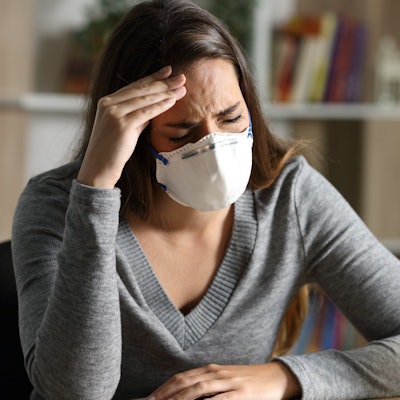
In December 2021, when the Omicron variant of SARS-CoV-2 was peaking, the U.S. Centers for Disease Control and Prevention (CDC) reduced the isolation period after infection from 10 days to five days. At the time, there had not been a lot of research to determine whether someone who was infected and might still be testing with a rapid antigen test could potentially be contagious at the end of this shortened isolation period.
Researchers at Stanford University have now published their findings in Infectious Diseases showing that rapid antigen tests remained positive in 27% of the study participants after seven days of isolation, which suggests that the five-day isolation period recommended by the CDC may be insufficient for preventing the ongoing spread of disease.
Previous studies examining RAT results at day five of infection have shown positivity rates higher than 40%. This percentage suggests that a substantial number of individuals may still be contagious when leaving isolation in the five- to 10-day period. The purpose of this study was to estimate the rate of RAT positivity after seven days of isolation in the context of the Omicron variants BA.1 and BA.2.
The study involved student athletes at a National Collegiate Athletic Association (NCAA) Division I university campus who had tested positive for SARS-CoV-2 between January 3 and May 6, 2022.
A total of 264 student athletes between the ages of 18 and 25 were part of the study, with 53% being female. They underwent rapid antigen testing starting at seven days postdiagnosis to determine whether they could end their isolation period. Of the 248 infections in individuals who did a day-seven test, 67 (27%) tests were still positive.
“More than a quarter of individuals in this case series had a positive [rapid antigen test] 7 to 10 days after their initial positive test, with even higher percentages of persistent positivity in individuals with symptomatic infections and the newer BA.2 variant,” concluded the researchers in their published findings. “This finding suggests that a substantial number of individuals may still be contagious after completing the Centers for Disease Control and Prevention-recommended [five]-day isolation period.”
Because all the participants in the study were college-aged, fully vaccinated, and had received booster doses if eligible, the study could not draw any conclusions as to how these findings could be generalized to unvaccinated or partially vaccinated populations and to the general population.
In addition, because testing out of isolation before 10 days was voluntary, not all individuals tested every day starting at day 7 and not all chose to test on their first eligible day. However, most participants (248 of 268) tested on day 7.
The researchers concluded that further studies are needed to determine whether these findings are present in a more heterogeneous population and with subsequent variants.













